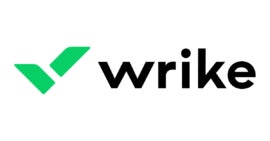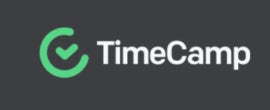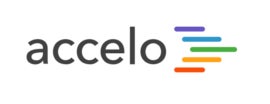6 Best Project Management Budgeting Tools in 2023
Discover the best project management budgeting tools using this guide. We review the top budgeting software, covering their features, pricing, and more.
Whether it’s your company, team or individual projects, staying on top of your budget is one of the most important tasks you can have. For teams that need to work on their projects and simultaneously stay on budget at every step, it helps to have an all-in-one solution or at least software that integrates with your preferred accounting solution.
Jump to:
Top project management budgeting tools comparison
The software in the table are not your only options, but they do offer a variety of different budgeting capabilities, costs and complementary features.
Zoho Projects: Best for integrating with other software
Teams that want a bundle of great business software to add to their tech stack should consider the Zoho suite of business solutions, especially Zoho projects. You can integrate with Zoho Books and Zoho Invoice for managing expenses. The software also has time tracking and timesheet approval for help managing payroll.
Pricing
- Free: 2 projects and 5GB of storage.
- Premium: $4 per user/month, billed annually, or $5 per user/month, billed monthly.
- Enterprise: $9 per user/month, billed annually, or $10 per user/month, billed monthly.
Features
- You can view projects in list view according to milestones or expenses to stay on top of your spending.
- Classic project management features like task dependencies and custom status for projects.
- Task management, task duration and subtasks.
- Gantt charts for project timelines.
Pros
- Integrate with Zoho software or other applications like Slack and Zapier.
- Plenty of storage space with paid plans starting at 100GB of storage.
- Project exporting in paid plans.
- Project budgeting tools in paid plans.
Cons
- Ability to add viewer access only in the Enterprise plan.
- Limited template access in all plans.
- Free isn’t as stacked as other software solutions.
For more information, read the full Zoho Projects review.
Wrike: Best for resource management

Wrike is a powerful project management tool with management features for resources, reporting and analytics. The software can also handle budgeting for your team and projects to help you get the best return on investment. It can get expensive if you want the most features they can offer, but you can still get a good start with their Free plan.
Pricing
- Free: Unlimited users and 2GB of storage.
- Team: $9.80 per user/month, billed annually.
- Business: $24.80 per user/month, billed annually.
- Enterprise: Custom pricing.
- Pinnacle: Custom pricing.
Features
- Work views like calendar, table and kanban.
- Integrations like Salesforce and Adobe CC.
- Advanced reporting and analytics.
- Google authentication and Enterprise security in all plans.
Pros
- Workflow automation in all paid versions (limited per actions per month).
- Resource management like time tracking and workload management for your team.
- Budgeting and resource booking in the Pinnacle plan.
- Ability to add collaborators and guests.
Cons
- User minimums per paid plan.
- Less storage than other applications.
- Limited automation, integrations and security of most plan tiers.
For more information, read the full Wrike review.
TimeCamp: Best for affordable time tracking

If you’re looking for budgeting features with strong time management all in a project management tool, then TimeCamp is one of the best options. All of their plans have some sort of time or budget management feature. Their pricing is also competitive compared to other feature-rich project management solutions.
Pricing
- Free: Unlimited users and projects.
- Starter: $2.99 per user/month, billed annually, or $3.99 per user/month, billed monthly.
- Basic: $5.99 per user/month, billed annually, or $7.99 per user/month, billed monthly.
- Pro: $7.99 per user/month, billed annually, or $10.99 per user/month, billed monthly.
- Enterprise: Custom pricing.
Features
- Multiple different time tracking capabilities like auto tracking, personal timelines and weekly timesheets.
- Time budgeting features like billable time, overtime tracking and invoicing.
- Project management features like unlimited tasks, subtasks and tagging.
- Self-hosting and private SaaS.
Pros
- Unlimited users and projects in all plans.
- Project template access in all plans.
- Reporting for time, budgets and estimates.
- Can export invoices to Quickbooks and Xero.
- Unlimited integrations in Basic and up.
Cons
- Two-factor authentication only in Pro and Enterprise plans.
- Project management, security and integrations are limited across plans.
Accelo: Best for customization

Accelo is great for more established teams that need custom features for their projects. You can mix and match their different feature sets and create a workspace dedicated to managing project budgets. You can also include features for sales, customer service and analytics teams. They are not the best choice for startups and small businesses because their plans can get very pricey.
Pricing
- Plus: $24 per user/month, billed annually, or $30 per user/month, billed monthly.
- Premium: $39 per user/month, billed annually, or $49 per user/month, billed monthly.
- Bundle: $89 per user/month, billed annually, or $99 per user/month, billed monthly.
Features
- A la carte style features for plan customization.
- Modules offered are sales, projects, tickets, retainers, billing and reports.
- General features include client and contact database, project management, work templates and scheduling.
- All plans have standard security, task lists, timers and task boards.
- You can sync with Microsoft 365 or your Google Workspace.
Pros
- Ability to add special features like reporting and billing without paying for unneeded features.
- Community and email support for all plans.
- Project module has more detailed project management offerings like budget forecasting, profitability and time allocation for projects.
- Billing module includes invoicing and purchase templates for projects.
Cons
- Plan tiers are a lot more expensive than competitors.
- The massive amount of features you can pick and choose can be overwhelming.
Teamwork: Best for collaboration

If you’re looking for a solution with plenty of collaboration, time tracking and budgeting capabilities, Teamwork may be your best choice. The software has five plans, with a custom tier for enterprises and affordable plans for smaller teams.
Pricing
- Free: 5 users and basic project management features.
- Starter: $5.99 per user/month, billed annually, or $8.99 per user/month, billed monthly.
- Deliver: $9.99 per user/month, billed annually, or $13.99 per user/month, billed monthly.
- Grow: $19.99 per user/month, billed annually, or $25.99 per user/month, billed monthly.
- Scale: Custom pricing.
Features
- Multiple work views like list, table and Gantt.
- Templates for tasks and projects.
- Intake form, collaborators and team chat for collaboration.
- Reporting for time and budgeting.
- Integrations like Quickbooks, Zapier, HubSpot and Harvest.
Pros
- Billable time tracking, user rates, timesheets, project budgets and invoicing to manage finances.
- Ability to add custom domains and branding.
- Phone, email and chat support for all paid plans.
- Storage starts at 50GB for paid tiers.
Cons
- Minimum user requirements for paid plans.
- Limits on integrations, automation and reporting across lower tiers.
- Project budgeting is limited outside of the Scale tier.
For more information, read the full Teamwork review.
Key features of project management budgeting tools
While these are not the only important features, they can certainly help teams prioritize the basics so they can find the right solution.
Budget tools
First and foremost, you need some sort of budgeting capabilities or, at the very least, relevant integrations. Budgeting features you can find in project management tools include invoicing, user rates and budget tracking. Some tools can track the budget for projects as well as each project’s individual tasks. Estimates, forecasting and overtime tracking won’t be found in every tool but are still possibilities. For example, TimeCamp offers estimates and overtime tracking.
Templates
Many project management solutions have ready-to-go templates for all sorts of project needs, including budget tracking. Templates like this will help you get started right away with managing project finances. You may need to manage costs for the number of contractors, materials, development, advertising, etc. If you want to explore templates available before buying, see their templates page, YouTube tutorials or demo with the sales team.
Reporting
Reporting capabilities are an effective way to overview all the financial elements you’re tracking. You can see your spending broken down for each task, project or specific time period. From there, you can make informed decisions on the value of the project, how much it can cost you in the future, and if you are still going to be within your spending limits.
Time tracking
One factor that coincides perfectly with spending is the time you’ve given the project. Your resources need to be allocated wisely. Features like time tracking, timesheets and task duration can help you understand where you are extending or over-extending yourself. If a project requires more time than any other and costs more than any other, it’s worth asking questions of value.
Integrations
Not every project management tool has great budgeting features or their budget tracking capabilities are too expensive to upgrade at this time. Knowing whether you can integrate with your preferred solutions for financial tracking is the next best choice.
How do I choose the best budgeting project management tool for my business?
Cost is the biggest factor, can you afford to buy the tier of software with budget-tracking capabilities? If not, you can start looking for alternative ways to manage project budgeting, like integrations.
If you can afford it, then you want to see who has the most relevant financial tracking and planning features. After that, tutorials and demos of those tools being put to use are integral. If it’s too complicated or takes too long, is it worth putting your team through? On the other hand, your project may require handling a lot of complex tasks, so more feature-rich software may be the only way to effectively manage your needs.
Before making a big financial commitment, try out the free plans, look for tutorials and give your team a chance to test it out. It can save time and money in the long run.
Methodology
The software in this article was selected according to how relevant they are to buyers looking for project management budgeting tools. Features were evaluated according to how useful they can be for managing finances. Each software was looked at fairly and in terms of their most relevant capabilities and affordability.
Source: News

